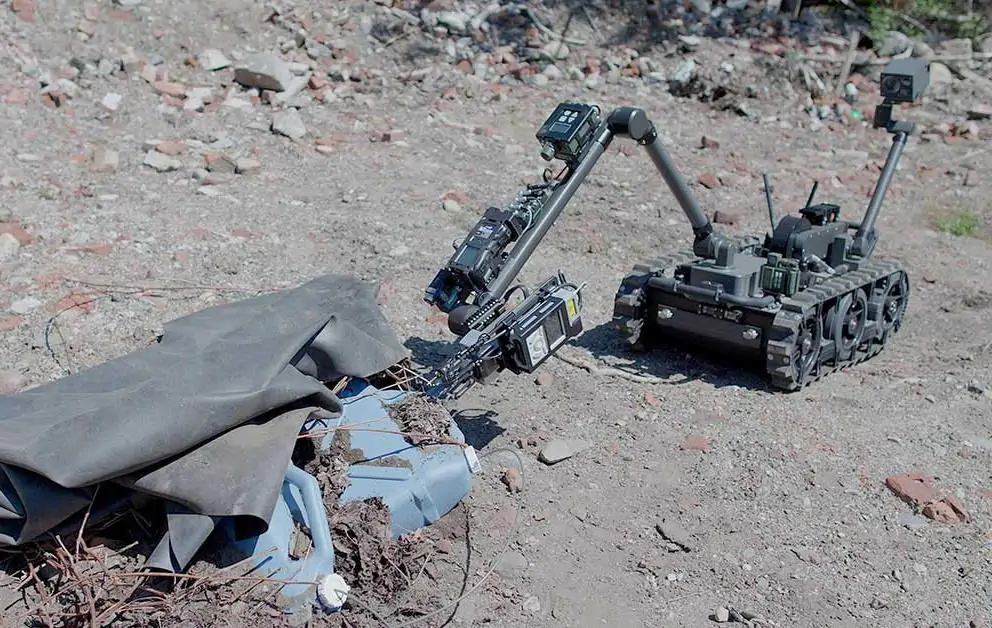
FLIR Systems has been awarded a contract to provide the United States Army, Air Force, and Navy with over 250 of its Centaur unmanned ground vehicles (UGVs). The contract has ben established through the Army’s Man Transportable Robotic System Increment II (MTRS Inc. II) program.
Centaur is a medium-sized UGV that provides a standoff capability to detect, confirm, identify, and dispose of hazards. The open-architecture robot weighs approximately 160 pounds and features an advanced EO/IR camera suite, a manipulator arm that reaches over six feet, and the ability to climb stairs.
FLIR has already received previous orders for more than 750 Centaur UGVs for the Army, Air Force, Navy, and Marine Corps. Explosive Ordnance Disposal (EOD) teams from all four branches will use the Centaur for disarming improvised explosive devices, unexploded ordnance, and similar hazardous tasks. The versatile robotic platform can be equipped with a variety of sensors and payloads to address a range of missions, including chemical, biological, radiological and nuclear (CBRN) threats.
The U.S. Army originally selected the medium-sized Centaur as its MTRS Inc II solution. Since then, other U.S. military branches have opted to deploy the Centaur to their EOD teams as a new or replacement ground robot system.
Tom Frost, VP and general manager for Unmanned Ground Systems in the Unmanned and Integrated Solutions business at FLIR, commented: “We’re tremendously honored that EOD teams across America’s military are relying on our Centaur robot to help them perform dangerous missions with greater stand-off capability. From enabling easy software updates to enhanced electro-optical infrared cameras, controllers, and communication systems, the Centaur can be a game-changer for troops on the battlefield. Sharing common technology across EOD units also creates efficiencies for joint service operations, training and sustainment.”


















